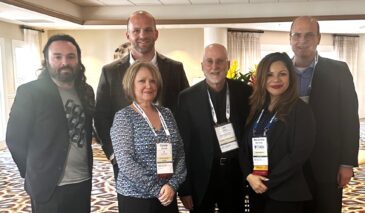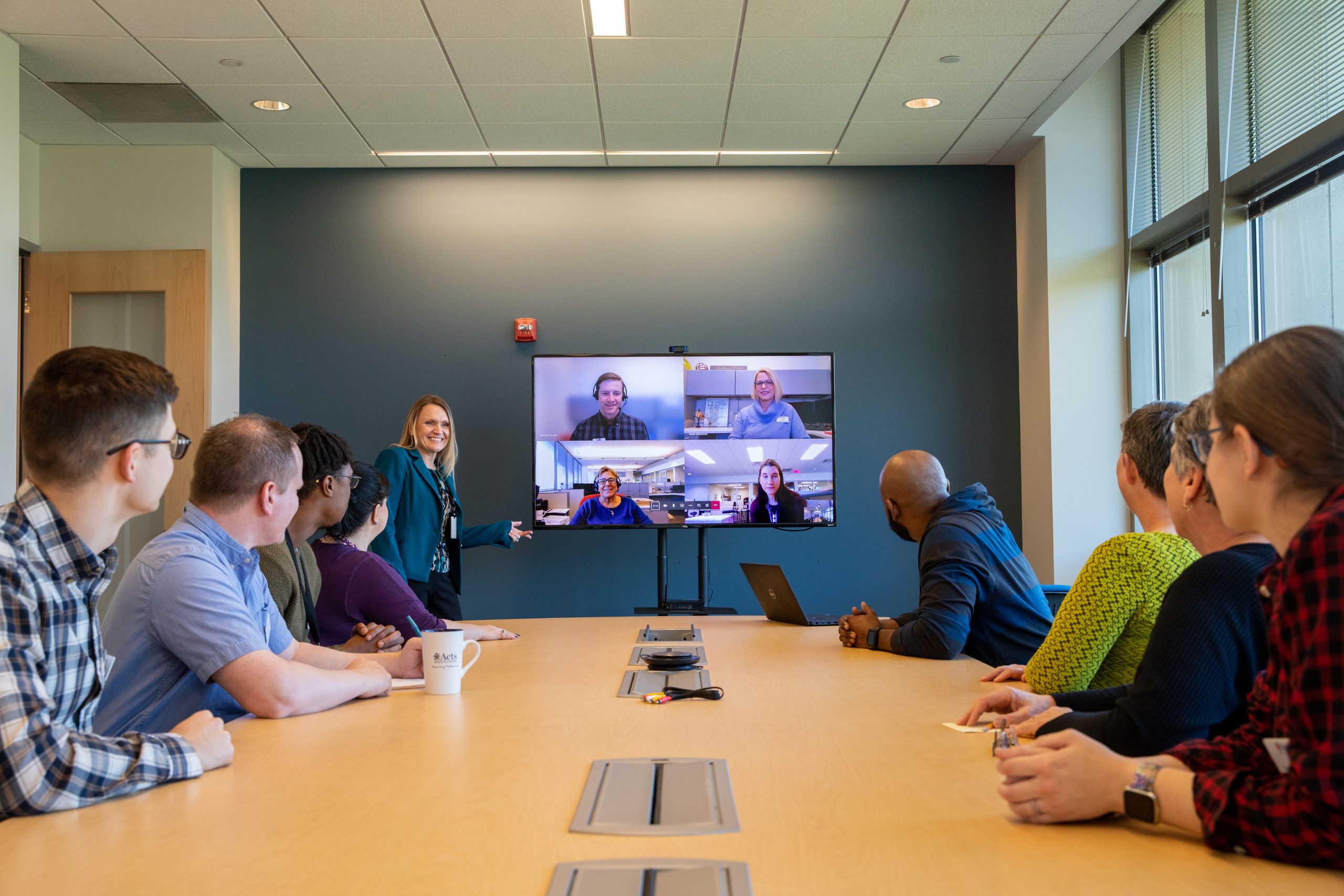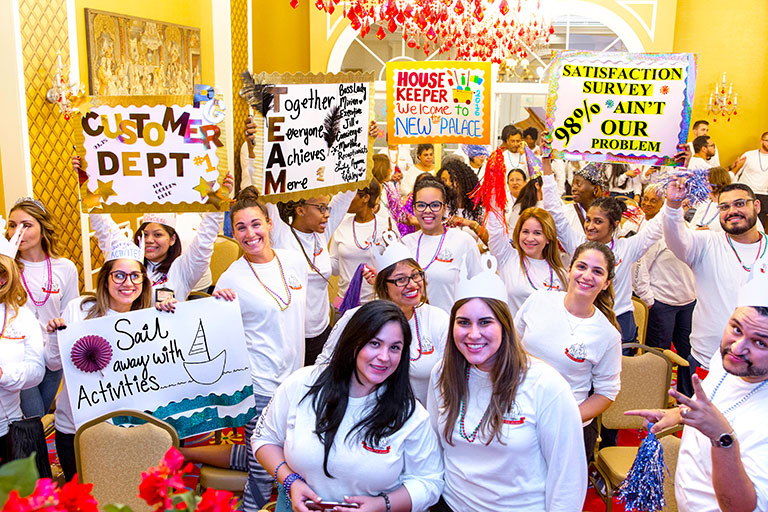
HEALTHTAC East 2025 Panel: Technology: What We Like and What We Need, Part 2
By Jim Nelson | April 8, 2025
AMELIA ISLAND, FL — At the recent HEALTHTAC executive event in this city, Senior Living News moderated a panel on technology from the perspective of what’s working and what’s not working.

Sonida Senior Living VP of Operations Carole Burnell, Mather VP of Information Technology Charley Sankovich, Thrive Senior Living SVP of Operations Tate Stewart, ToDo Robotics CEO Marianela Nanninga, and TSOLife founder/CEO David Sawyer were the panelists.
In part 1 of this article we learned about some of the things that our panelists love about what’s currently available in tech. In part 2, we’ll learn a little more on that subject, and also find out what the panelists think we need from tech moving forward. Out of respect for all of our tech sponsors in the room, we refrained from mentioning brand names during the onstage panel; for clarity in this article, we’ve included applicable brand names in brackets.
“There are really two pieces of tech that we love,” mentioned Stewart. “The first one is pretty basic: it’s our CRM [WelcomeHome]. It was the first time that I interacted with software in senior living that I was like, ‘Yeah, this is what a software experience should be like.’ That was a breath of fresh air. We implemented that in 2023 and that was fantastic.
“The other piece of tech that I’m really passionate about right now,” Stewart continued, “just to make it personal and understand my passion behind it, truthfully at the beginning of last year, I was pretty burned out in senior living — it had been a couple really hard years, hundreds of nights in hotel rooms and doing what we all do, and I didn’t see a lot of amazing new things coming into senior living that could make what we do better and that could make us more effective as operators. As we started peeling back the layers on fall detection [AUGi by Inspiren] we found groups of people that were really passionate and really smart with real funding and real development capabilities behind these platforms. We ended up selecting what I would categorize as an advanced AI ecosystem that has transformed the way that we deliver care on the front lines. We’ve put a lot of technology into the hands of our caregivers over the years — Alexas and iPhones and iPads and cameras and motion detectors, and all kinds of things — Thrive is known for being at the leading edge of that. And honestly, whenever I ask caregivers for feedback, they say, ‘I hate you. It sucks. It doesn’t work. It makes my job harder.’ With the implementation of this platform, the feedback we’ve gotten from frontline caregivers and the memory care director has been absolutely raving fans. Our memory care director said, ‘I check on every resident every night before I go to bed.’ She loves that capability. It helps her sleep at night, so that’s amazing. The three features that this platform delivers, fall detection is one of them, and it’s really good. We know when a resident falls, we know when a resident is at risk of falling, we know when they’re out of bed in the middle of the night, and the alerts are really succinct and get right into the hands of caregivers that can respond and do something with it.
“The other one, which I mentioned with our memory care director, is virtual rounding,” Stewart continued. “Not only does she use it to go to bed at night, our caregivers use it throughout the day to prioritize, especially in the mornings, ‘Who’s out of bed? Who can I get dressed right now? Who’s ready to get in the shower?’ And they’re able to quickly do that. Same at night. They can check on residents, they can quickly [see] if somebody’s moving — they’re going to get an alert — ‘They’re just turning over in bed. Nope, they’re trying to get up, I’ve got to go.’ It’s really transformed the way that that team delivers care.
“And the third thing that it does that is great for a lot of reasons, it categorizes how much care residents are receiving,” Stewart concluded. “I know the residents that require the highest amount of care in memory care, and how many hours that is, and if there’s a discrepancy in billing, yes, we can resolve that. More importantly, we’re able to start to recognize our team members and who’s really doing what and who should be rewarded. How can we start to align pay to those things, and how can we really develop reward systems and increase the satisfaction that a caregiver has? I see all this stuff in clear view now. I didn’t know how we were going to make the job of a caregiver more rewarding, or how we’re going to make their job easier, how to make them more effective at their work, and in turn, build satisfaction and improve retention. That’s really at the heart of all this. So, that’s been a huge breath of fresh air for me, to see the capabilities of these platforms, and to see it go into the hands of the people that deliver the care, and see them saying, ‘Thank you. This is awesome,’ has just been amazing for us.
“To expand on that,” Sawyer grabbed the baton, “for functionality to exist like that, that’s not just hundreds of hours, that’s not just thousands of hours, that’s tens of thousands of hours of people training these modules out. This is time-intensive work that companies are investing into these things, and we do have awesome opportunities for us to take advantage of it.”
Next, it was time for our panelists to comment on the things they’d like to see from tech moving forward.
“We need the systems to integrate better,” said Sankovich. “We currently use robotic process automation to move data between systems, to solve functionality that doesn’t exist in systems, to connect to multiple systems to aggregate data, so we really need the solutions to open up their APIs to each other so that we can move data to where we need it.”
As Sankovich was talking, all four other panelists were nodding in agreement.
“There is not a lot I can add to that,” Burnell said. “That would be the key for us: just one platform that our executive directors could go to with actionable items that would help them best manage their business and focus our efforts on where it’s going to have the greatest impact, versus going to all the different platforms and dashboards and trying to figure it out in their already-busy day.”
With Nanninga being the head of a robotics company, we asked her about the future of robotics.
“In the near future what we’re going to be seeing is mainly in the operational side,” she said. “We’re talking about cleaning robots, IoT systems that integrate with robots to actually perform very specific tasks, back of the house and in front of the house. Any kind of process that requires some physical process, automation will be able to actually [do it]. How? In different ways: It will go in automation systems, it will come in the form of semi-humanoids — machines that look like a robot, have the platforms of a robot, but actually will have arms and will be able to perform certain activities that will be trained. Realistically, within the next seven to eight years, you’re going to see the first humanoids actually [doing] some real basic tasks. That humanoid, in 15 years, probably will help you to take care of the seniors as well.




